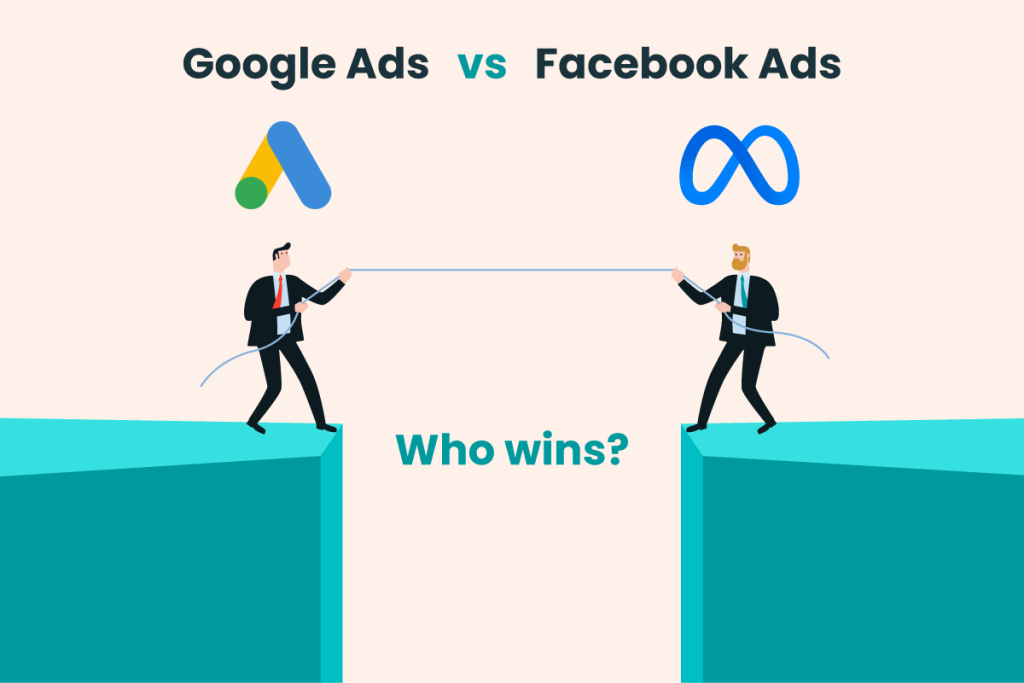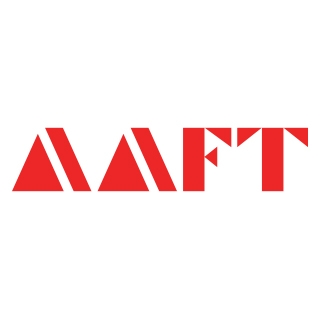Google Ads vs. Meta Ads: Which Is Better for Beginners?
Not Sure where to spend your ad money? Google and Meta Ads can be game changers in perfecting your digital marketing strategy in 2025.
While Google Ads helps reach people actively searching for what you sell, Meta lets you authentically connect with your audience, build long-term relationships with potential consumers, and increase visibility through accessible content marketing strategies.
Keep reading to understand the different characteristics of Google Ads Vs. Meta Ads and find out which one best suits your business goals.
What are Google Ads?
Google Ads are paid advertisements that you see on Google search results, YouTube, and other websites operated by Google.
Do you want free career counseling?
Ignite Your Ambitions- Seize the Opportunity for a Free Career Counseling Session.
- 30+ Years in Education
- 250+ Faculties
- 30K+ Alumni Network
- 10th in World Ranking
- 1000+ Celebrity
- 120+ Countries Students Enrolled
From the sponsored ads you see when you enter a search query to YouTube ads and image or banner ads on different websites, these are highly targeted and typically follow a PPC (Pay Per Click) model.
Businesses use the Google Ads platform (formerly Google Adwords) to create these video, image, text, and shopping ads based on intent, interest, and keywords.
Read Also: 7 Creative Careers That Are Exploding Right Now
Book Now →
These ads are mainly focused on driving website traffic and increasing sales.
What are Meta Ads?
Much like Google Ads, Meta Ads are paid advertisements that you see across Meta-owned apps and websites. This includes some of the most popular social media platforms—Instagram, Facebook, and Messenger.
Have you noticed how related advertisements keep popping up on your feed once you’ve clicked on an ad or searched a hashtag? This is because the ads target users based on demographics, online activity, and data collected through cookies, and show you products and services you might be interested in.
Do you want free career counseling?
Ignite Your Ambitions- Seize the Opportunity for a Free Career Counseling Session.Businesses and Advertisers use Meta Ads Manager to create and manage these carousel, story, image, or reel-based ads and monitor their performance over time.
Meta Ads are designed to draw viewers’ attention, boost visibility and brand awareness, foster engagement, and increase conversion rates in this highly dynamic digital landscape that is social media.
Google Ads Vs. Meta Ads – How Are the Two Different From Each Other?
Google Ads and Meta Ads have their own uses and key advantages. Businesses and their marketing teams conduct in-depth research, competitor analysis, and market study, and understand consumer behavior to select the perfect path or use a combined strategy.

Read Also: What is Programmatic Advertising? Automated Ads Explained
The following table compares the important parameters and provides an overview of the two for a clearer understanding.
| Parameters | Google Ads | Meta Ads |
| Focus | Google Ads are primarily search and intent-driven and focus on the keywords/search queries frequently used by people. | Meta Ads are based on interests. These focus on products and services that might align with the user’s online activity and preferences. |
| Type | Text ads that appear with the ‘sponsored’ tag upon searching, video-based ads on apps like YouTube, image or banner ads on websites, and clickable shopping ads. | Ads typically appear in stories, reels, images, texts, and carousels. |
| Targeting | Based on keywords that people actively look for. | Based on demographics, online behavior, engagement patterns, and interests. |
| Ad Length | These ads are usually short in length, aimed at quickly conveying the message. The video ads can be 15-30 seconds long, detailing the product specifications and addressing the pain points. | The length of the ad and the time taken to read/go through it depend on the format. However, short-form video and text-based ads are kept short and engaging to cater to the short attention span of social media users. |
| Complexity | The Google Ad platform offers a detailed and technical but complex interface. It requires a deep understanding of keyword research, PPC and bidding, and structuring different ads. | The Meta Ad Manager offers a more user-friendly interface. It has a step-by-step campaign setup, easy navigation, and a variety of targeting options that are beginner-friendly and easy to understand. |
| Creativity | Google Ads offers room for creativity in video and banner ads, while text-based ads are to-the-point and succinct and aim to deliver a clear, intent-driven message. | Meta Ads often focus on creativity to draw and engage people. Advertisers can use various formats, including creative video, collage animations, and images, to build brand awareness and reinforce the brand message while also resonating with the targeted demographic. |
| Cost | Flexible with varying costs depending on keyword demand. Some options also allow advertisers to regulate costs and set daily limits. | With a lower Cost-Per-Click or CPC value, Meta ads are more budget-friendly for beginners and small businesses. These are especially suited for lead generation. |
| Click-Through-Rate | Google Ads, with their intent-based ads, often have higher CTRs as compared to Meta Ads. | Since Meta Ads are interest-based, and people are not actively searching for these products, the CTR is usually lower. |
| When to Use | Google Ads are perfect for lead generation, e-commerce, and getting direct responses. | These are perfect for brand awareness, increasing engagement, and advertising products that social media users might be interested in. |
Read Also: What is Influencer Advertising? Trends, Platforms & Campaign Ideas
Google Ads Vs. Meta Ads – How to Decide What’s Best for You as A Beginner?
Advertising is a must if you are a small business owner or want to launch your new business. But, how do you decide what advertising approach to take and what ad will be the best for your company?
Google Ads is ideal for fast results, high visibility, and campaigns that are designed around targeted keywords.
At the same time, Meta Ads perfectly capture the short attention span of the social media audience through visually appealing posts that cater to their interests.
They both sound like they can immensely help your business, right? So, how to choose between Meta and Google Ads?
Start by asking yourself these basic questions to find out what’s best for your goal –
1. What Are your Objectives?
The first and most important step is to have clarity on your objectives.
For instance, if you want quicker results, search-based Google Ads can be the perfect option, but if you want to build awareness and engage with the consumer first, and help them get acquainted with your products/services, Meta Ads is your call.
Read Also: How to Use Social Media to Maximize Your Event’s Reach
Make a list of your objectives and what you want to achieve (don’t forget a timeline), and see which of the two aligns with them.
2. Who Do You Want to Target?
Conduct a thorough market study and understand who you are targeting through your ads.
Are you marketing a product or service that your potential customers actively search for online? Google Ads allows brands to precisely target consumers by bidding on high-traffic keywords and strategic positioning that helps increase website traffic and higher CTRs.
Do you want your audience to come across and explore your brand while casually scrolling through social media? Do you want them to resonate and interact with your brand message to foster brand loyalty? Meta Ads, with creative visuals and engaging formats, are perfect for garnering more attention and engaging with consumers in real-time.
3. What is Your Ad Budget?
Your ad budget is an important factor to consider while selecting the perfect medium.
Do you have budget constraints and want to explore affordable testing? Do you want quick conversions and have the budget to spend more for search-specific ads?
Meta Ads are often more affordable and have a low CPC value. Google Ads, on the other hand, requires a more planned budget allocation, owing to its competitive keyword bidding and high CPC.
3. What is Your Strong Suit
Both Google Ads and Meta Ads require creativity, precision, and smart use of keywords. However, these parameters can be platform-specific too.
Social media often caters to a younger audience, focusing on creative and catchy visuals that draw attention and engage the users, urging them to interact with the content.
Read Also: Micro-Influencers vs. Celebrities: Who Drives Better PR Results?
Google Ads often rely on creating compelling copies with strategically targeted keywords that are informative and have clickable CTAs. These focus on problem-solving and convey a clear and concise message to the consumers.
Conclusion
Both Google Ads and Meta Ads provide powerful opportunities for beginners to reach potential customers online. Google Ads excels in intent-based marketing, capturing users actively searching for specific products or solutions—making it ideal for direct conversions. Meanwhile, Meta Ads (Facebook and Instagram) are better suited for visually engaging, interest-based targeting and brand awareness.
For beginners, the choice depends on your goals:
- Choose Google Ads if you want high-intent traffic and measurable ROI.
- Choose Meta Ads if you want to build awareness, especially with strong visuals and storytelling.
To master both platforms and build a successful career in digital marketing, consider enrolling in the Digital Marketing course at AAFT Noida. This hands-on program is designed to equip you with real-world skills in paid advertising, social media marketing, SEO, and more—perfect for launching or accelerating your digital career.

AAFT has been providing the world with limitless creativity and expression since 1993! Through a dynamic and industry-driven curriculum, AAFT provides engaging and captivating articles to persuasive blogs and empowers its readers to explore diverse avenues of creative media education-related content.






